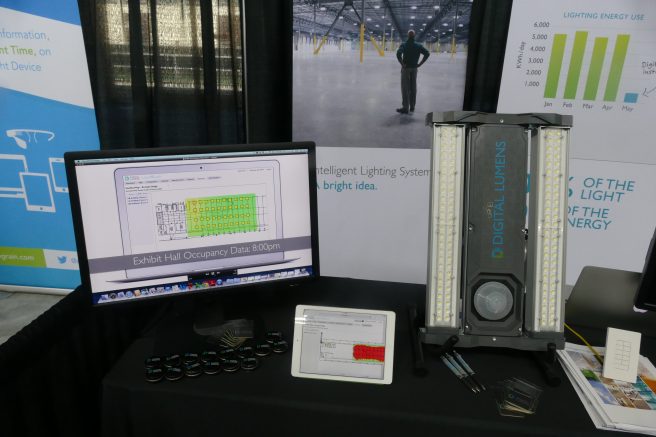While at the O’Reily Solid conference back in 2015, I got to experience the best IoT innovations vendors had to offer. One of the more interesting vendors spotlighted was Digital Lumens, a that specializes in intelligent lighting or "smart lights”.

Smart lights are designed to provide light where there is activity on the factory floor. If there is no one in the area, the lights turn off progressively, dimming where needed and ramping up quickly when activity picks up immediately
They are an design aspect of Lighting as a service, a IoT subset trend in which the lights and the operation of their sensors are constantly adjusted to match factory floor operations. The result is managed costs through analytics and supporting technological service. The strong indicators that were shown in 2015 seems to be continuing into the next decade, as research firms have estimated market growth through 2020.
Digital Lumens has invested heavily in sensor-bearing light fixtures, and has seen several payoffs. To demonstrate the analytic potential, the outfit deployed sensor-bearing light fixtures within Fort Mason, the facility where the Solid conference was hosted.
I spoke with Kaynam Hedayat, Digital Lumens Vice President of Product Management and Marketing. Hedayat explained to me the potential in power metering - understanding the cost behaviors associated with power consumption. He explained the benefits as it related to recent API release for LightRules, a protocol meant to connect analytics and signal between Digital Lumens light fixtures and other equipment.
“Ultimately you learn which area in your manufacturing space you want light at a certain time. If there is no one in the area,you can achieve energy saving without leaving employees in the dark for critical equipment through progressive dimming, then ramping up quickly when employees come into a work area."
The chances for Digital Lumens’ success rides high as smart lights become a staple among IoT-influenced consumers as it has for B2B. Smart lights have allowed customization of an environment to fit a specific need, from helping babies to sleep to keeping people alert in low light environments.
The New York Times quoted Mariana Figueiro, who leads light and health research at the Lighting Research Center of Rensselaer Polytechnic Institute, about the consumer influence. In the article she states that “Lighting is really not about a fixture in the ceiling anymore….It’s about delivering individualized light treatments to people."
That customization can also address specific needs in the commercial environment such as safety. Digital Lumens introduced an emergency automation system based on its LightRules protocol called the Emergency Management Solution. The solution is meant to test lights for NFPA-101 compliance. As a result facility managers can schedule and perform automated emergency lighting tests to ensure employee safety prior to emergency situations.
As sensors like those in smart light fixtures pick up more applications in the real world, they will introduce new ways to consider analytics. Metrics will still be a proxy for human activity, but within IoT applications the activity will represented through the trigger of a sensor. This counters web analytics, which placed human activity in a context of digital media consumption, be it a downloaded white paper or a click from a paid search ad. It ultimately redefines the quality of the data received, with better notions of what to infer from the activity.